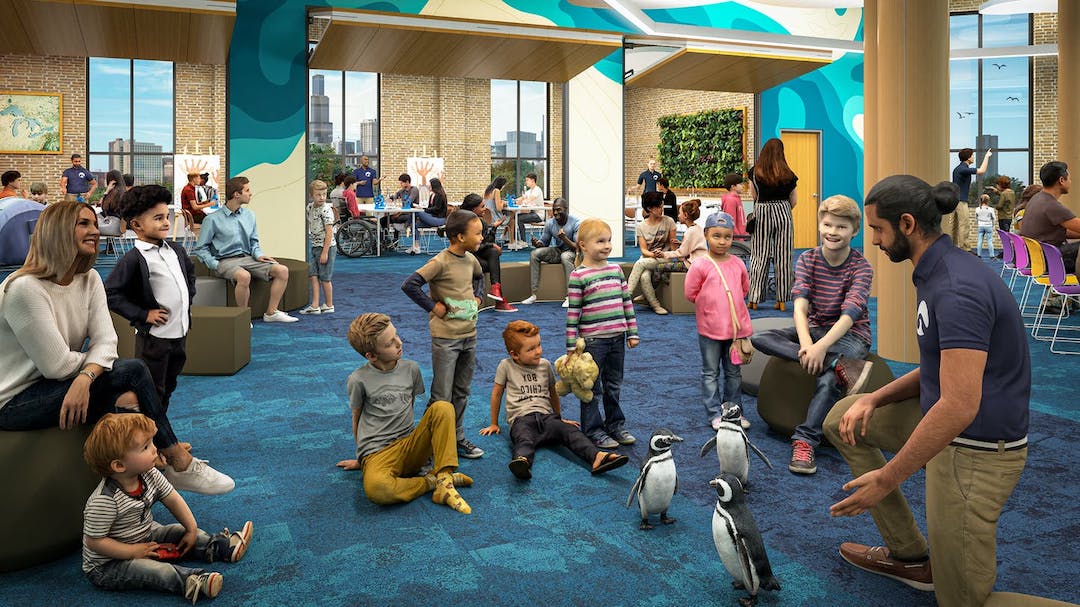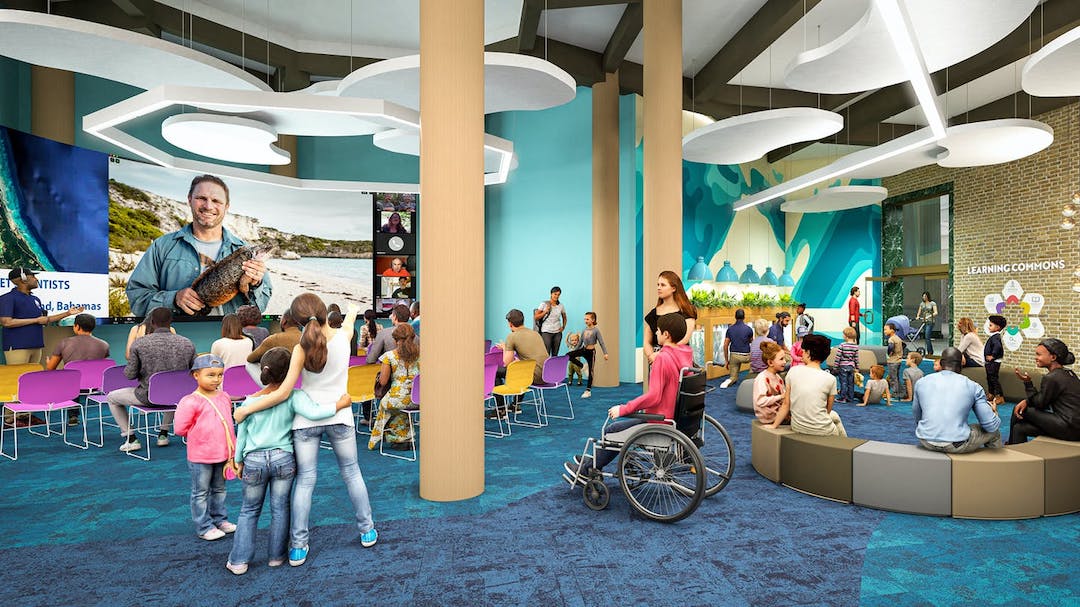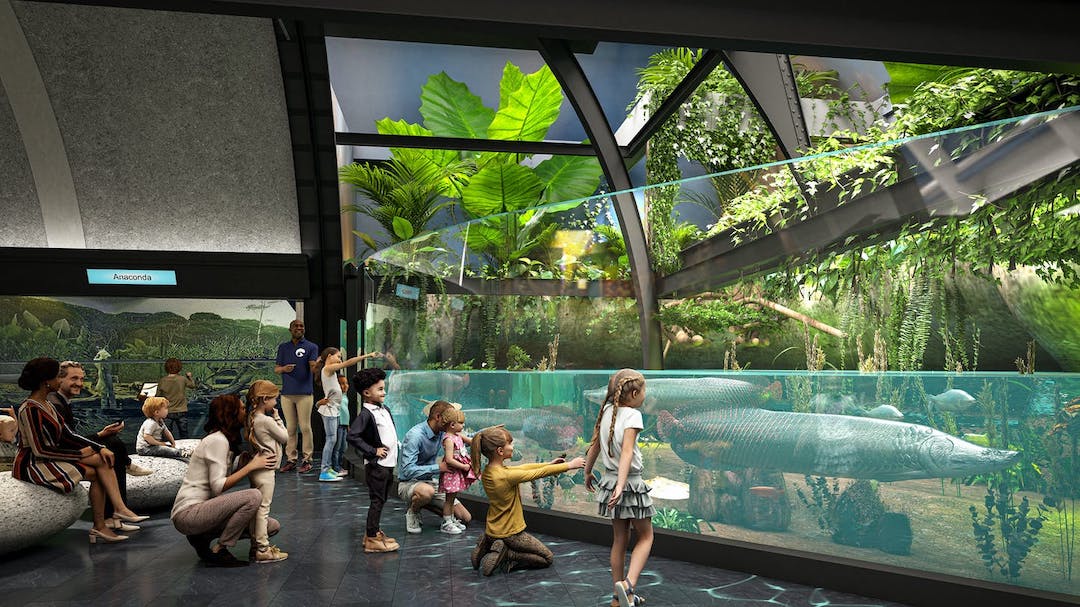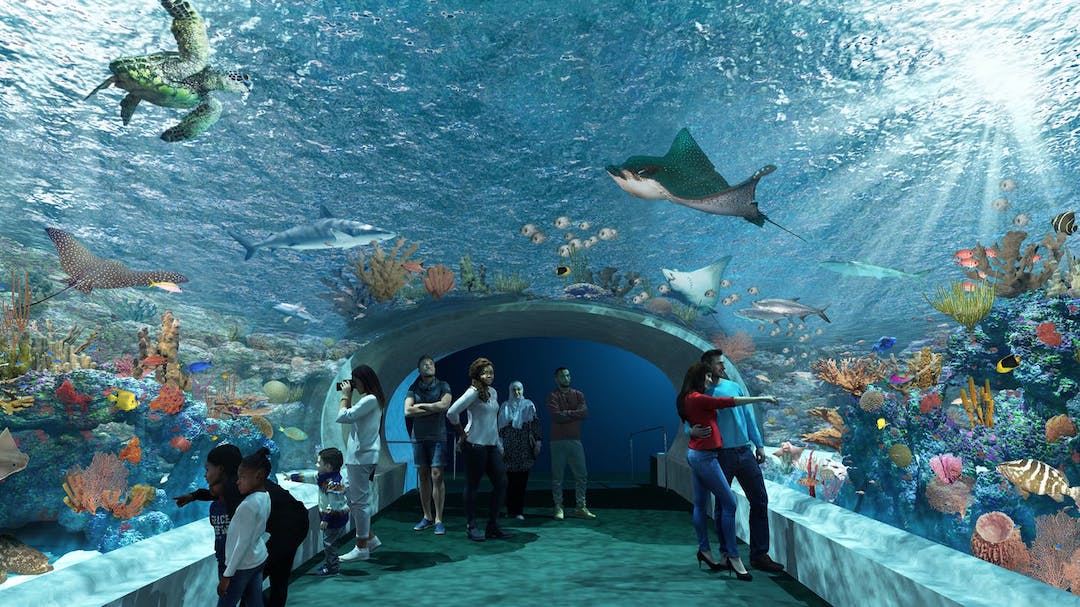The Shedd Aquarium has unveiled its strategic vision for the next 100 years. The vision, dubbed the Centennial Commitment due to the organization’s 100th anniversary in 2030, is aimed at ensuring a more equitable, sustainable, and thriving future for people and aquatic life.
The Centennial Commitment centers around three primary pillars - For People, For Communities, and For Aquatic Life. These pillars include:
- Deeper community investments and partnerships
- A modernized aquarium experience through the transformation and restoration of the historic galleries and dynamic new exhibits that provide greater and more accessible entry points
- New educational and experiential programs
- Digital engagements that bring animals and conservation action programs from the aquarium into more hands and homes
- Advancements in animal care and welfare
- Accelerated aquatic research and science

Half of the $500 million budget will power the programs and partnerships needed to achieve the Centennial Commitment’s aspirations while the other half will focus on the needed physical improvements to the historic Beaux-Arts-style building that will modernize the aquarium galleries and experience, enable greater accessibility, enhance animal habitats, and restore architectural features such as the opening of original windows that provide views of the Chicago skyline and Lake Michigan and unobstructed public access to the building’s original exterior promenade and garden spaces.

The multi-year, four phase construction project will begin in late 2022. Project highlights include:
- A modernized experience that will feature more accessible, interactive, highly immersive, and science-rich galleries
- A new learning commons located at the historic core of the aquarium on the main level that will serve as a launchpad and increase the amount of existing classroom space
- A centralized science hub that will merge five existing scientific laboratories into one central hub spanning microbial ecology, conservation science, water quality and chemistry, genome studies, and pathology
- New circulation pathways that will significantly reduce the number of transitions between areas of the aquarium, allowing guests to have multiple options regarding where they can start their journey and making navigation easier.
- Four acres of activated outdoor green space around the building that will increase natural connections to nature and bolster resilience on the lakefront while also adding experiential blue and environmental improvements.

The modernization of the historic galleries will serve as the largest capital project for the organization in recent history, preceded by the expansion of the Abbott Oceanarium in 1991 (and its reimagination in 2008), Amazon Rising exhibit in 2001, and Wild Reef exhibit in 2003.
The build team will include Pepper/BMI Construction (general contractor partners), Valerio Dewalt Train (architect), Thinc Design (exhibit design partner), JLL (project manager), Institute for Human Centered Design (accessibility partner), and Trinal (equity and inclusion partner).
Construction is slated to conclude in 2026 with new galleries, programs, and experiences opening each year on a rolling basis.
Related Stories
| Jun 12, 2014
Austrian university develops 'inflatable' concrete dome method
Constructing a concrete dome is a costly process, but this may change soon. A team from the Vienna University of Technology has developed a method that allows concrete domes to form with the use of air and steel cables instead of expensive, timber supporting structures.
| Jun 11, 2014
David Adjaye’s housing project in Sugar Hill nears completion
A new development in New York's historic Sugar Hill district nears completion, designed to be an icon for the neighborhood's rich history.
| Jun 9, 2014
Green Building Initiative launches Green Globes for Sustainable Interiors program
The new program focuses exclusively on the sustainable design and construction of interior spaces in nonresidential buildings and can be pursued by both building owners and individual lessees of commercial spaces.
| Jun 9, 2014
Eli Broad museum files $19.8 million lawsuit over delays
The museum, meant to hold Eli and Edythe Borad's collection of contemporary art, is suing the German company Seele for what the museum describes as delays in the creation of building blocks for its façade.
| Jun 4, 2014
Want to design a Guggenheim? Foundation launches open competition for proposed Helsinki museum
This is the first time the Guggenheim Foundation has sought a design through an open competition. Anonymous submissions for stage one of the competition are due September 10, 2014.
| May 29, 2014
7 cost-effective ways to make U.S. infrastructure more resilient
Moving critical elements to higher ground and designing for longer lifespans are just some of the ways cities and governments can make infrastructure more resilient to natural disasters and climate change, writes Richard Cavallaro, President of Skanska USA Civil.
| May 23, 2014
Big design, small package: AIA Chicago names 2014 Small Project Awards winners
Winning projects include an events center for Mies van der Rohe's landmark Farnsworth House and a new boathouse along the Chicago river.
| May 22, 2014
IKEA to convert original store into company museum
Due to open next year, the museum is expected to attract 200,000 people annually to rural Älmhult, Sweden, home of the first ever IKEA store.
| May 21, 2014
Gehry unveils plan for renovation, expansion of Philadelphia Museum of Art [slideshow]
Gehry's final design reorganizes and expands the building, adding more than 169,000 sf of space, much of it below the iconic structure.
| May 20, 2014
Kinetic Architecture: New book explores innovations in active façades
The book, co-authored by Arup's Russell Fortmeyer, illustrates the various ways architects, consultants, and engineers approach energy and comfort by manipulating air, water, and light through the layers of passive and active building envelope systems.
















